Apple Watch vs Whoop: Which Apple Fitness Plus fitness tracker is best for you?
Should you go Apple Watch or Whoop? Here’s our take.
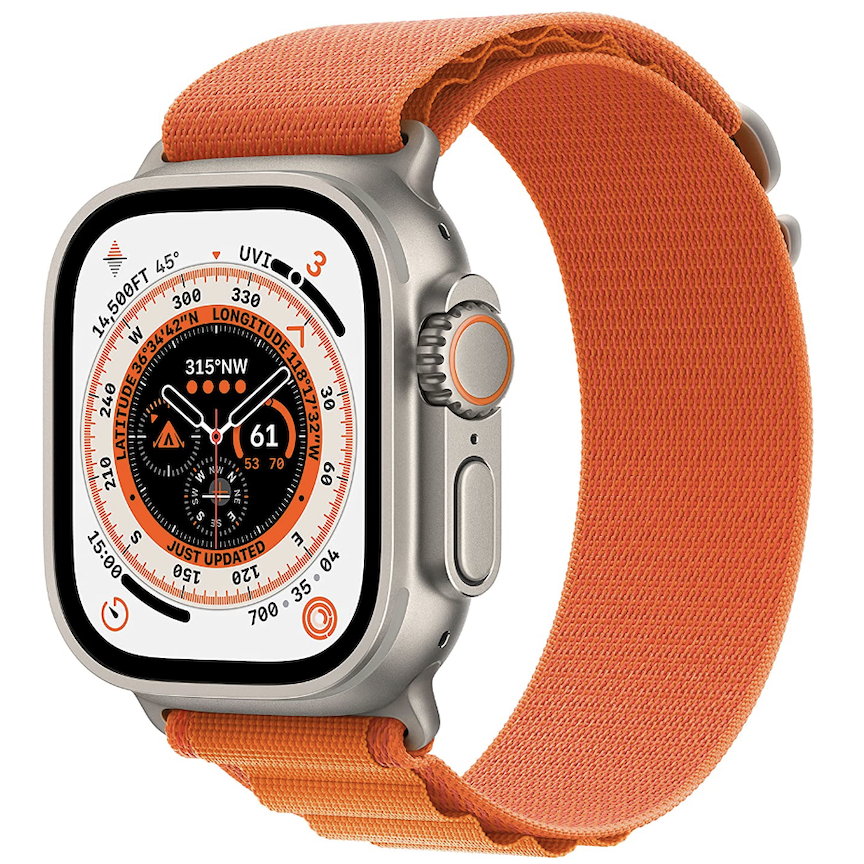
The smartest watch
The Apple Watch family of devices are some of the most popular fitness trackers around, with a litany of sensors and features. They integrate seamlessly with Apple Fitness Plus as well, working straight out of the box.
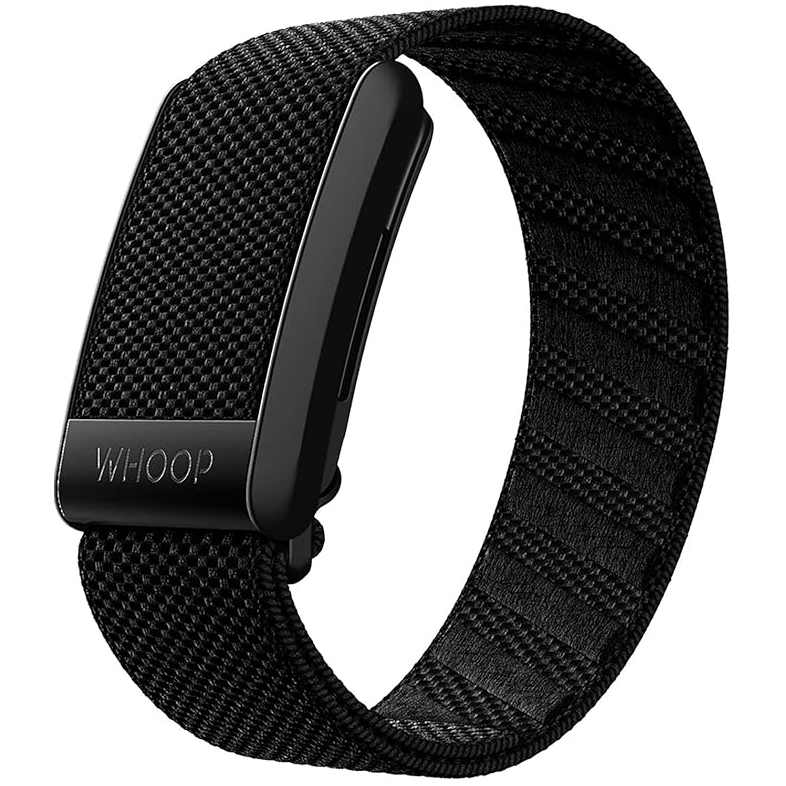
Don't need a screen?
Whoop is slightly different in that it's not a smartwatch — but it does sit on your arm, connect to your iPhone, and track your fitness. You need a subscription to Whoop for it to work, which brings it up to price parity with the Apple Watch as well. For the price, however, you get an excellent app.
The Apple Watch and Whoop are two of the most high-profile wearables you can slap on your wrist right now. On one side you have one of the best smartwatches you can buy, on the other you have a fitness band wearable that’s favored and used by some of the biggest athletes and sports teams on the planet to help make sure they’re in tip-top shape.
They might seem slightly odd ones to mention in the same sentence, but in terms of being wearables that can help you better track your health, fitness and pay good attention to your recovery time in between, there are probably more similarities than you’d think.
So if you only have the money to spend on one of them, which should you buy? We’ve tested both the latest Apple Watch and the Whoop 4.0 to give you a better sense of where the biggest differences and similarities lie to help you decide which is a better fit for you.
Apple Watch vs Whoop: Pricing
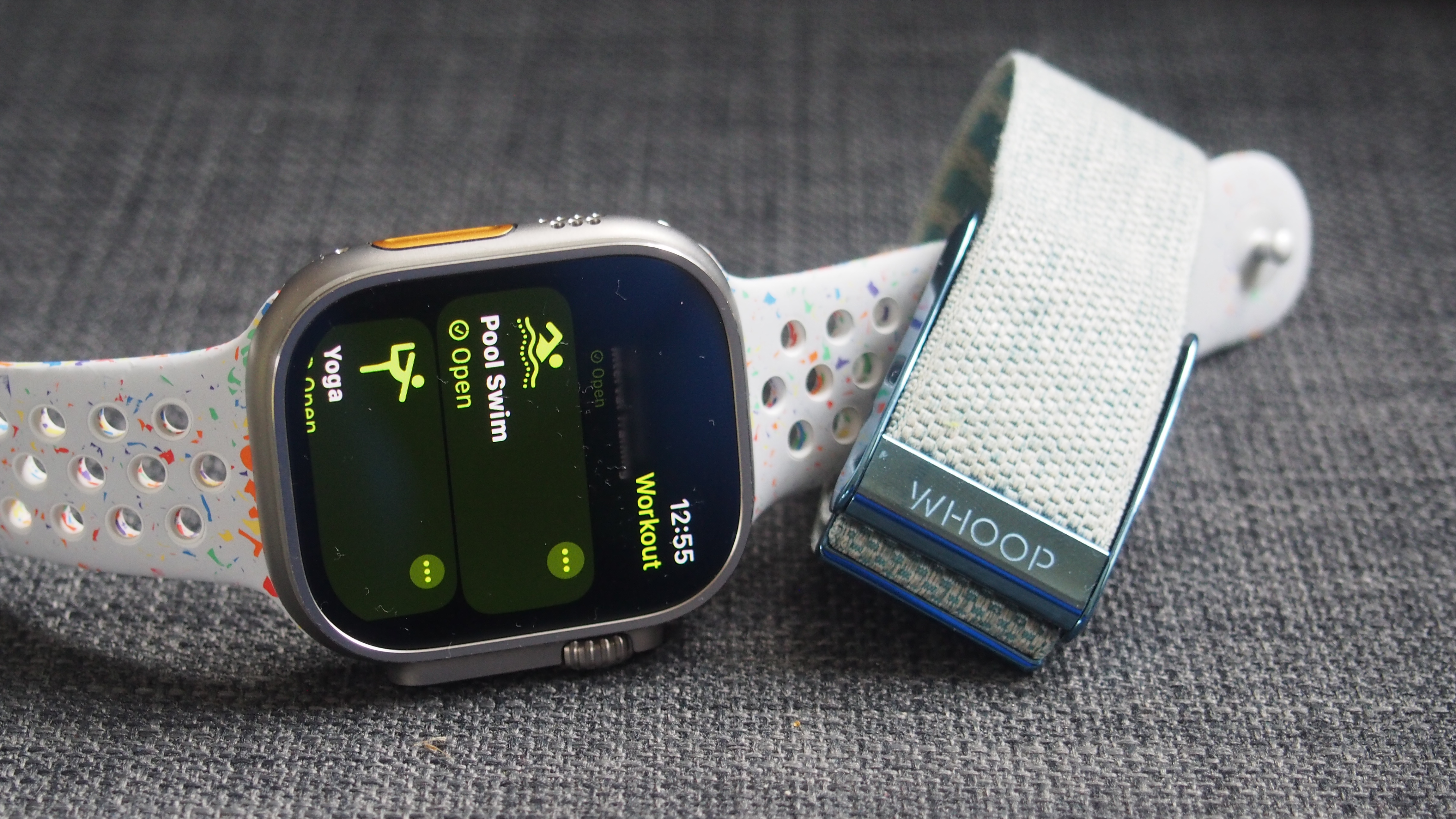
Before getting into the nitty-gritty of what these two wearables can do, we need to talk about pricing. The Apple Watch pricing varies from £219/$219 for the Watch SE to £799/$799 for the Watch Ultra 2, Apple's best Apple Watch. It’s not cheap, but there are more affordable smartwatch options in Apple’s collection.
For the Whoop, you’re going to need to pay for a subscription to get the band and access to all of the features in the Whoop companion smartphone app (iOS and Android). That costs £27/$30 for a 12-month subscription. You can also pay £229/$229 upfront for an annual membership or £384/ for a 24-month membership. There is also the option to trial it for free for one month. Bottom line, it’s expensive too.
Apple Watch vs Whoop: Design and displays
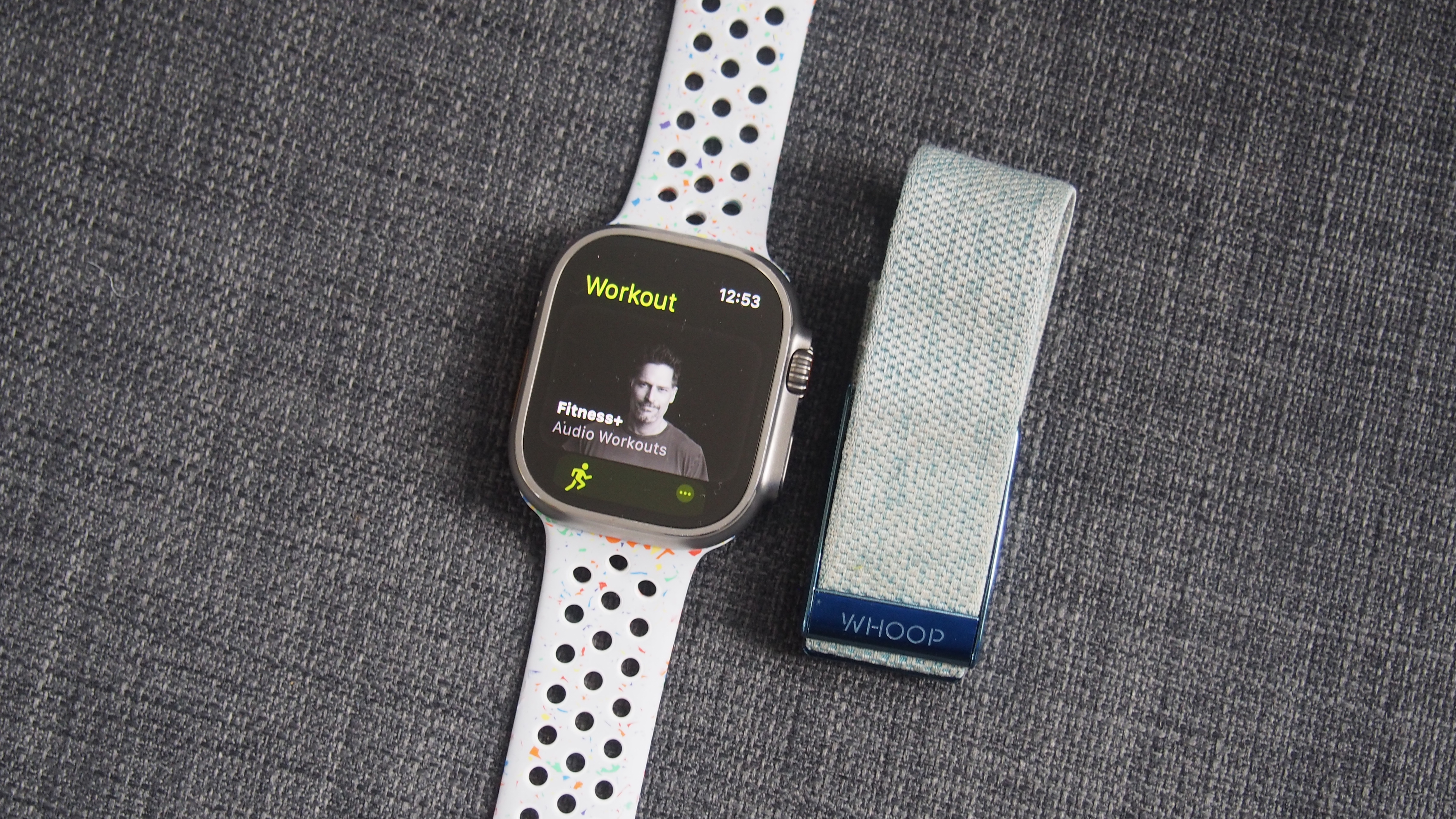
So, these are decidedly two very different-looking wearables. One is a smartwatch, the other is a more simple-looking fitness band disguised as a stylish fabric bracelet.
The Apple Watch comes in different sizes and models led by the Apple Watch SE, the Series 9 and the Ultra. It’s a blockier affair that does come with a removable strap and uses a combination of an OLED touchscreen display and physical buttons to interact with it. You also have Siri and Apple’s latest Double Tap gesture feature to use it hands-free as well.
The Whoop 4.0 comes in just one size and matches up a fabric band with a metal buckle that houses the tracking hardware. Whoop also offers those bands in a variety of looks.
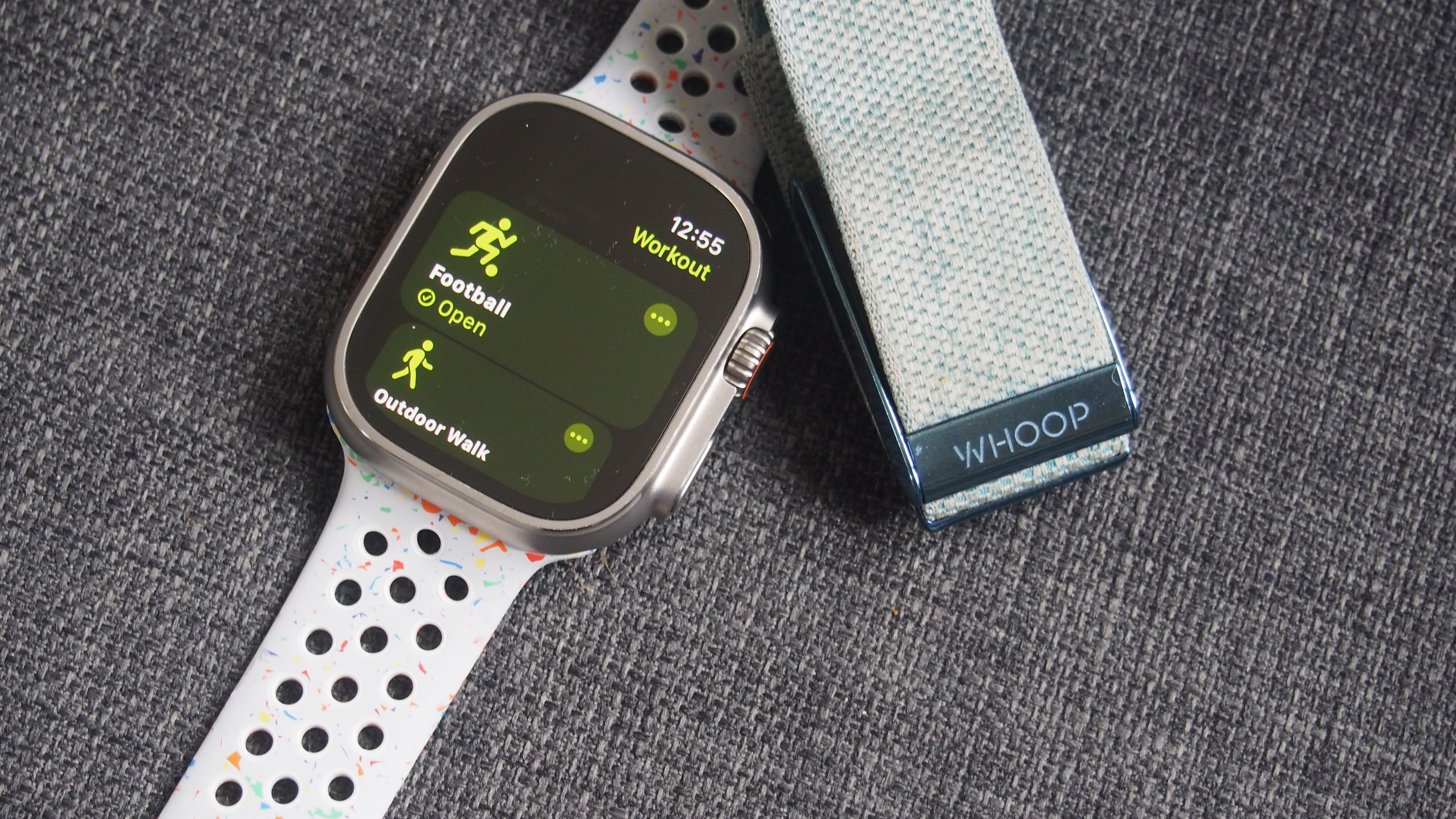
Like the Apple Watch, it’s worn on the wrist, though Whoop does offer the ability to track other parts of the body with its garment range that includes shorts and workout tops. There are also straps that let you wear it on your bicep, which can improve tracking accuracy in some scenarios. Unlike the Apple Watch, there is no screen and simply includes a battery status LED indicator that can be illuminated by tapping on the strap.
They’re both devices you can take swimming and wear in the shower with the Whoop 4.0 suitable to be submerged in water up to 10 meters depth. The Apple Watch Series 9 and SE are waterproof up to 50 meters depth, while the Ultra goes deeper up to 100 meters and is suitable for deep sea diving as well.
Apple Watch vs Whoop: Health and fitness features
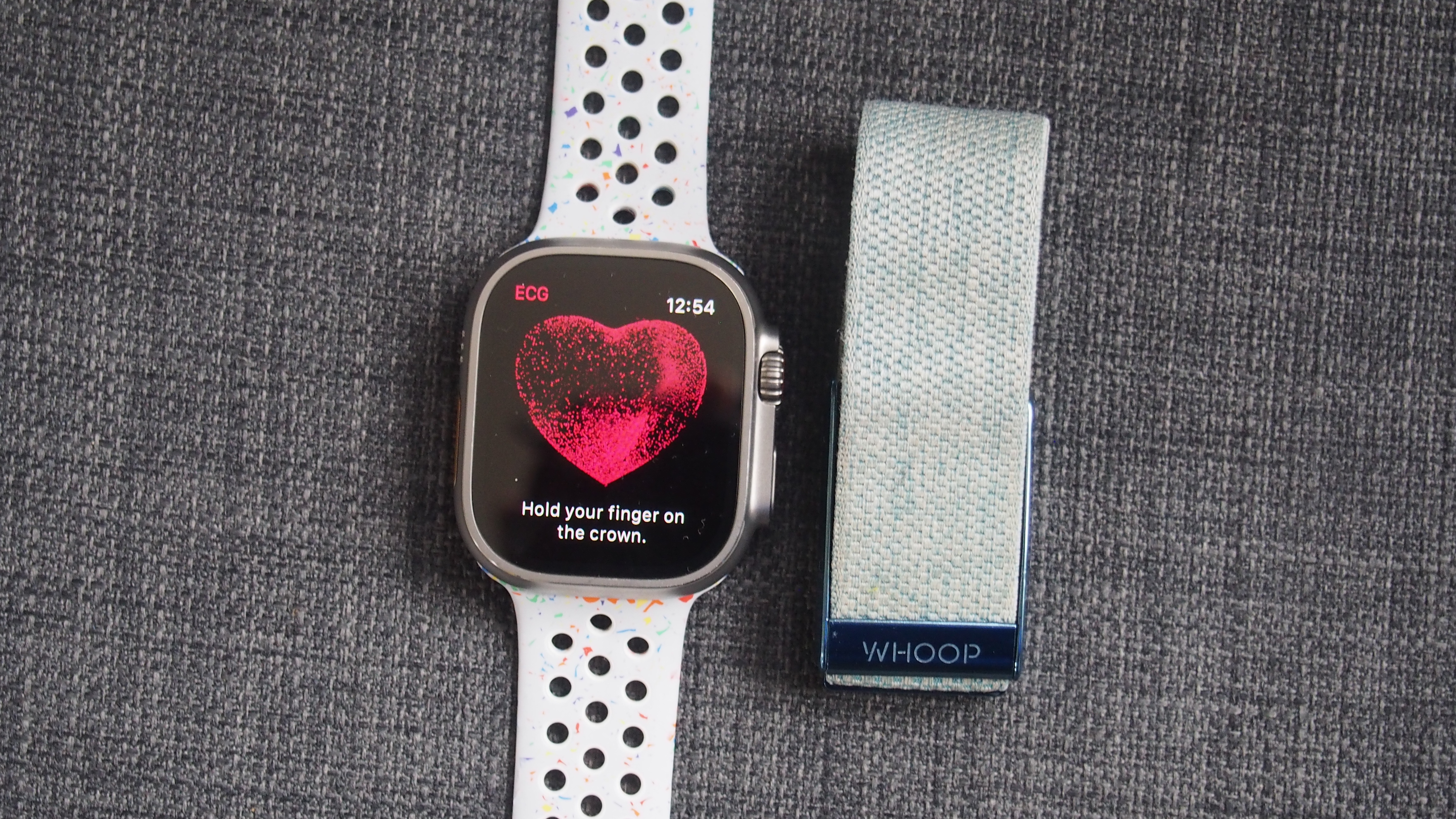
This is what things really boil down to. What these two wearables can offer in terms of tracking your fitness and health.
We’ll start with the Apple Watch and it’s fair to say it does a lot here. It can track your daily steps and sleep, heart rate, including notification when heart rate is low or spiked from its usual rate. With the Watch Series 9 and Ultra, you get an ECG sensor, which can be used to detect signs of serious heart conditions like atrial fibrillation. While Apple’s latest Ultra and Series Watches launched with blood oxygen sensors, those features have been dropped (for now) due to Apple’s patent dispute with Masimo.
The Whoop isn’t considered a medical device, but does offer a rich array of sensors that can be used to offer an insight into your general wellness. It has sensors to track blood oxygen, heart rate, skin temperature and respiratory rate. Whoop compiles that sensor data in a health report to help you identify if anything is out of the ordinary. As mentioned, these aren’t medical-grade insights but as many Whoop’s have discovered, it can offer a useful and pretty reliable heads-up if you’re starting to become unwell.
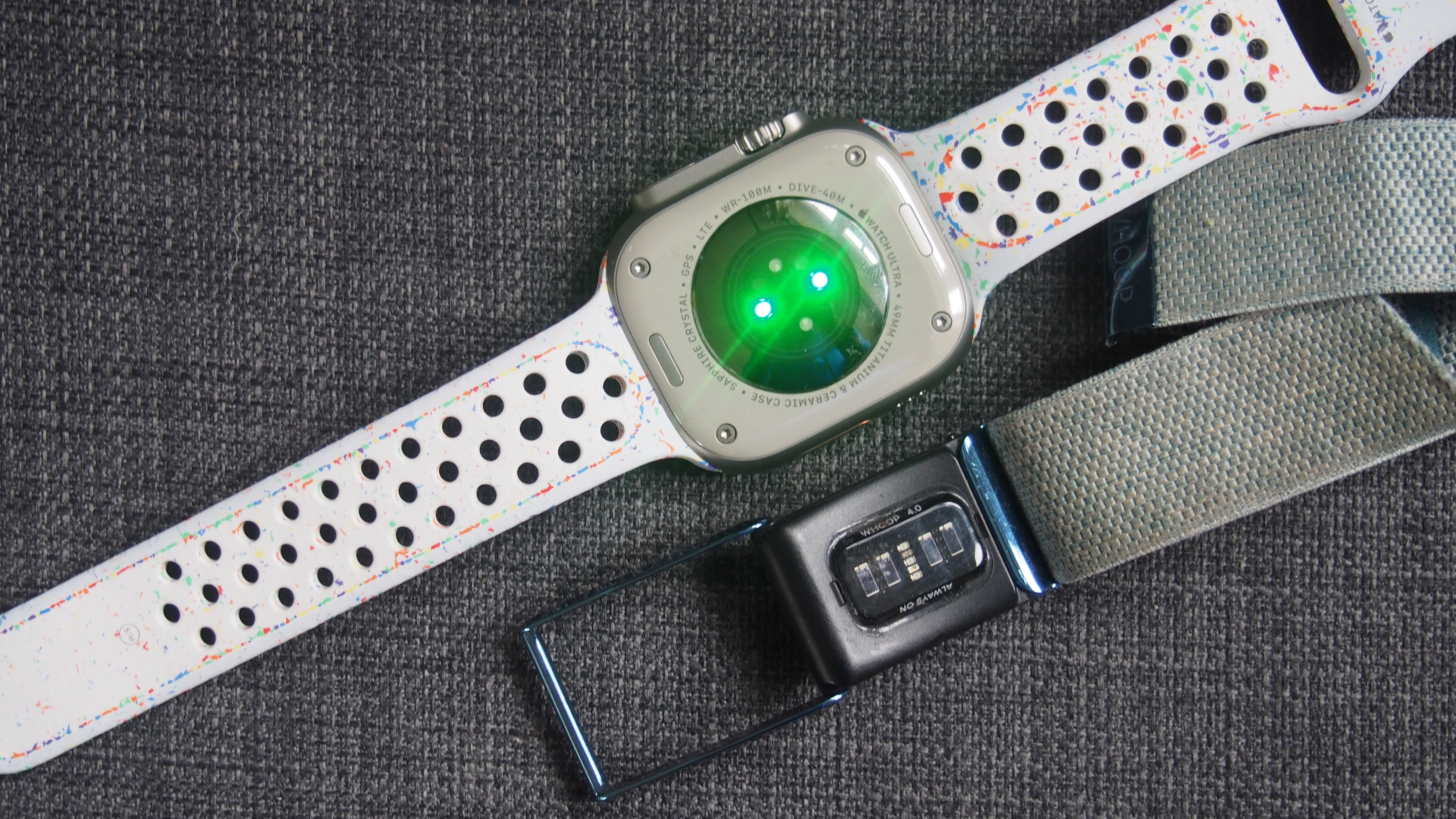
When it comes to tracking your exercise, the two devices take slightly different approaches. The Apple is more traditional in that sense using sensors like accelerometers and built-in GPS to track your indoor and outdoor workouts. Apple has its own native Workout app and also has access to a rich collection of fitness apps via the Apple App Store. It also works with Apple’s Fitness+ workout app, letting you see daily activity tracking Rings close in real-time as you work out.
The Whoop 4.0 focuses on tracking your heart during workouts and includes automatic exercise recognition along with support to track outdoor workouts using your phone’s GPS. That’s because GPS isn’t included on the device itself. Whoop translates your movement into its Strain metric and that Strain score will dictate the necessary recovery needed and that does mean the Whoop tracks your sleep time. Crucially, it does it in a very accurate fashion too. With core tracking heavily reliant on heart rate, the sensor accuracy needs to be strong. We’d say accuracy is better for some workouts compared to others and definitely improves when worn on the bicep, which is a supported wearing position.
No screen means you need to spend a lot of time in the Whoop companion app to get a sense of your strain, recovery and along with general insights. It’s quite a full-on app, so it takes time to work out which information is going to be most useful.
Apple Watch vs Whoop: Smartwatch features
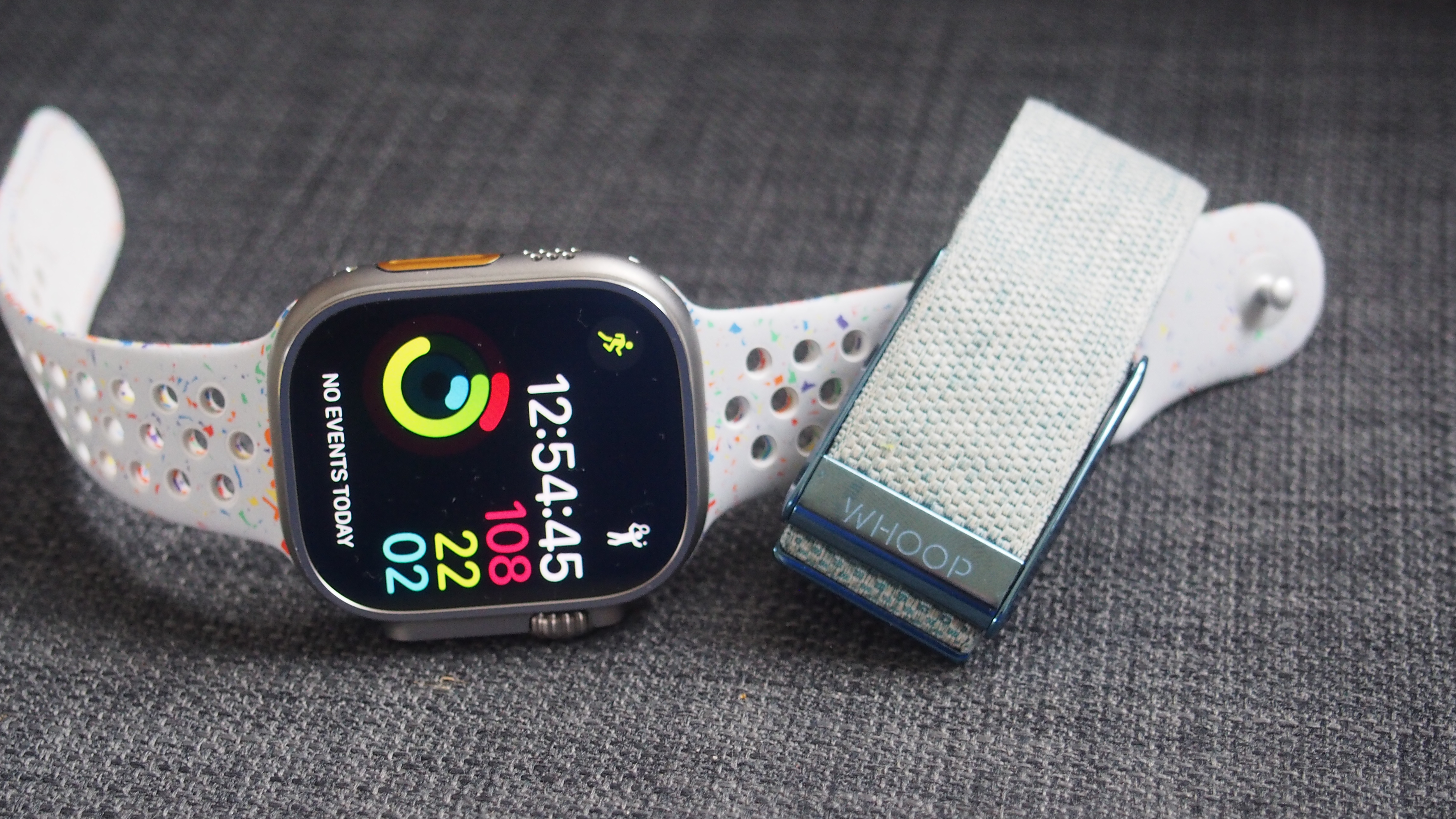
How useful are these wearables when you’re not getting sweaty? Well, Apple comfortably wins that one. It’s a smartwatch and gives you one of the best smartwatch experiences available — if you’ve got one of the best iPhones. That includes payments, notifications, music features, app support, and the option of extracellular connectivity.
What does the Whoop give you in comparison? Not a lot we’re afraid. It does work with both Android phones and iPhones, though that lack of a display means you’re getting none of the features on offer on the Apple Watch. It doesn’t even count steps. Its single redeeming smartwatch feature is having the ability to set an alarm, which can send haptic vibrations to the device to gently wake you up in the morning.
Apple Watch vs Whoop: Battery
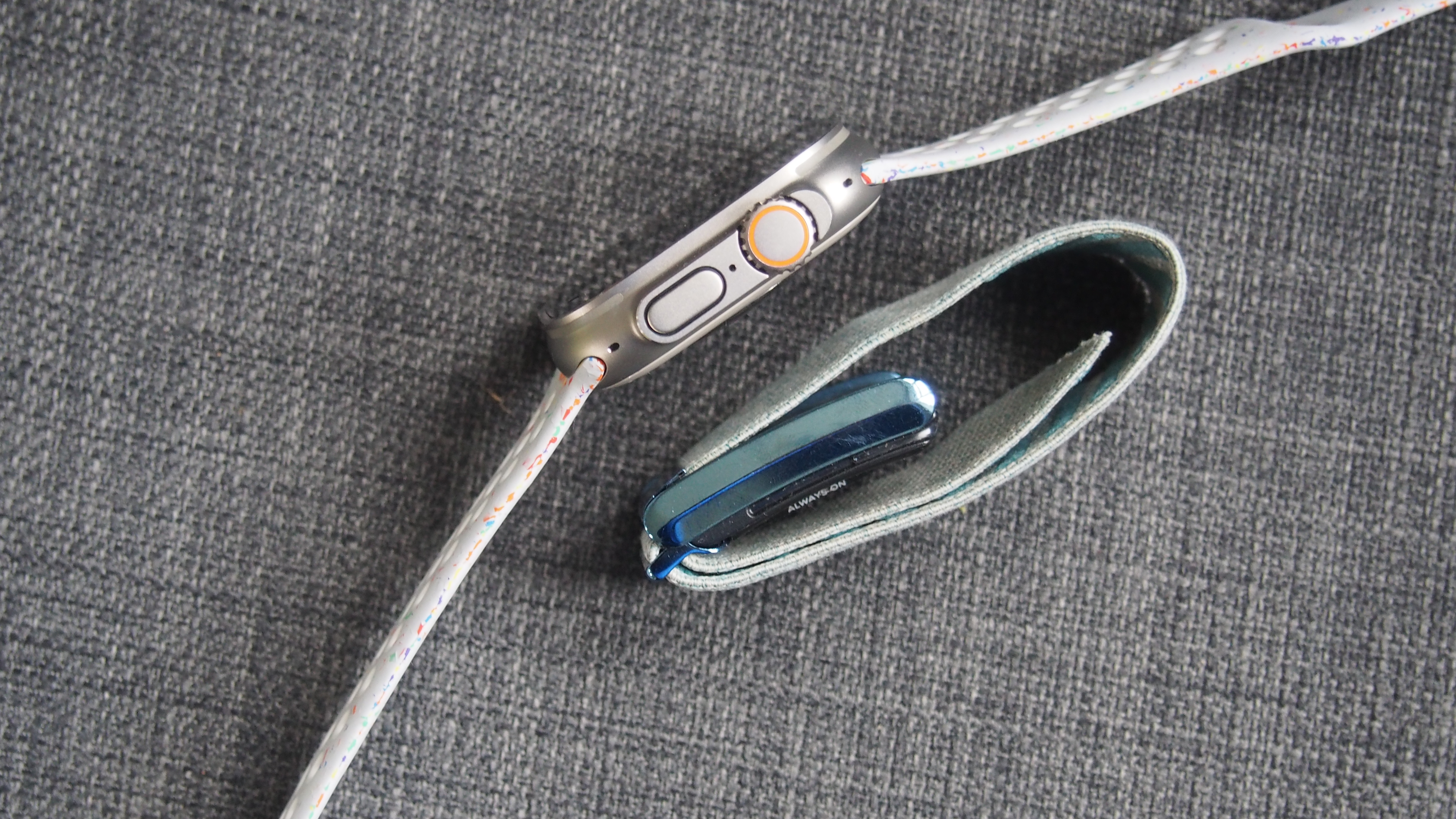
If you’re looking for a wearable that will keep you away from the charger for longer, it’s the Whoop you want.
Whoop promises up to 5 days battery life, which is longer than what you can expect to enjoy from the Apple Watch Series 9 (18-36 hours) or the Ultra 2 (36-72 hours).
Both use proprietary chargers, though how they’re put to charging use does differ. Apple’s charging puck sits on the rear of the watch case. The Whoop 4.0 is charged from a battery pack that clips onto the band and can store charge letting you charge it on the move as well.
Apple Watch vs Whoop: Which should you go for?
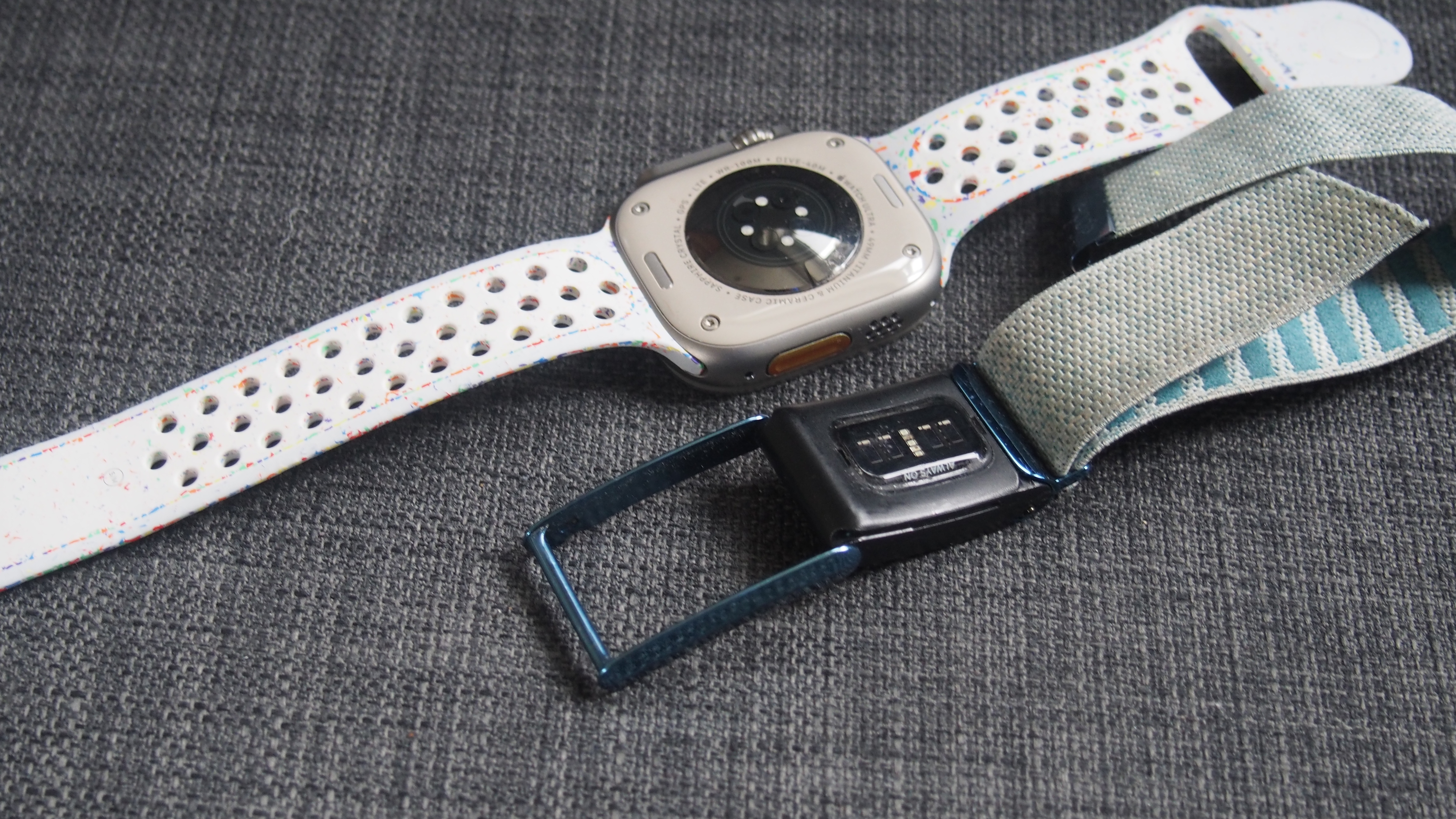
Now that you’re armed with all the key information, should you go for the Apple Watch or Whoop? These are two different wearables first and foremost, but if you want a fitness wearable that doesn’t look like a wearable and can be a useful tool for better understanding the relationship between exercise, recovery, and staying in tip-top shape, then the Whoop might be for you.
If you want some of that Whoop experience in a smartwatch form factor that’s going to be more useful outside of tracking time, then it’s the Apple Watch you want. While Apple doesn’t deliver all of those Whoop-esque insights natively, it can lean on a host of third-party apps that can give you that.
Master your iPhone in minutes
iMore offers spot-on advice and guidance from our team of experts, with decades of Apple device experience to lean on. Learn more with iMore!
Michael is a freelance journalist who has covered consumer technology for over a decade and specializes in wearable and fitness tech. Previously editor of Wareable, he also co-ran the features and reviews sections of T3, and has a long list of bylines in the world of consumer tech sites.
With a focus on fitness trackers, headphones, running wearables, phones, and tablet, he has written for numerous publications including Wired UK, GQ, Men's Fitness, BBC Science Focus, Metro and Stuff, and has appeared on the BBC Travel Show. Michael is a keen swimmer, a runner with a number of marathons under his belt, and is also the co-founder of YouTube channel The Run Testers.

